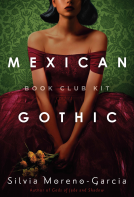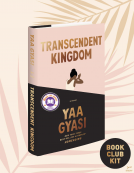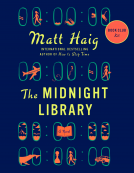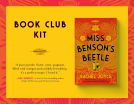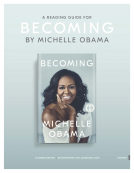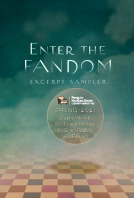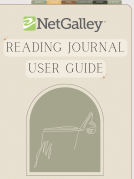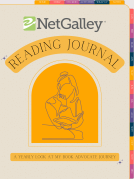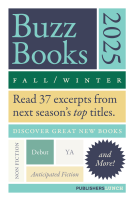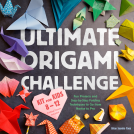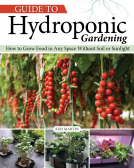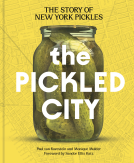
Toward a Global Middle Ages
Encountering the World through Illuminated Manuscripts
by Edited by Bryan C. Keene
This title was previously available on NetGalley and is now archived.
Send NetGalley books directly to your Kindle or Kindle app
1
To read on a Kindle or Kindle app, please add kindle@netgalley.com as an approved email address to receive files in your Amazon account. Click here for step-by-step instructions.
2
Also find your Kindle email address within your Amazon account, and enter it here.
Pub Date Sep 03 2019 | Archive Date Jan 27 2020
Getty Publications | J. Paul Getty Museum
Talking about this book? Use #TowardAglobalMiddleAges #NetGalley. More hashtag tips!
Description
This important and overdue book examines illuminated manuscripts and other book arts of the Global Middle Ages.
Illuminated manuscripts and illustrated or decorated books—like today’s museums—preserve a rich array of information about how premodern peoples conceived of and perceived the world, its many cultures, and everyone’s place in it. Often a Eurocentric field of study, manuscripts are prisms through which we can glimpse the interconnected global history of humanity.
Toward a Global Middle Ages is the first publication to examine decorated books produced across the globe during the period traditionally known as medieval. Through essays and case studies, the volume’s multidisciplinary contributors expand the historiography, chronology, and geography of manuscript studies to embrace a diversity of objects, individuals, narratives, and materials from Africa, Asia, Australasia, and the Americas—an approach that both engages with and contributes to the emerging field of scholarly inquiry known as the Global Middle Ages.
Featuring 160 color illustrations, this wide-ranging and provocative collection is intended for all who are interested in engaging in a dialogue about how books and other textual objects contributed to world-making strategies from about 400 to 1600.
Available Editions
| EDITION | Other Format |
| ISBN | 9781606065983 |
| PRICE | $60.00 (USD) |
| PAGES | 296 |
Links
Average rating from 20 members
Featured Reviews
 Agnes P, Reviewer
Agnes P, Reviewer
A rich collection of essays from about twenty experts of illuminated manuscripts, at the high standards of the Getty Museum. The period is medioeval, but this time the area of investigation is extended over the boundaries of Europe and embraces the other continents as well. Richly illustrated with images that hardly can be seen elsewhere, it is a treasure for the connoissair.
This book promises an introduction to the field of Global Middle Ages and really delivers! Within this volume there are several themed sections (each with an introduction by Bryan C. Keene) which then contain essays surrounding the central premise. These essays are pleasantly diverse with a wide range of interpretations about what a global approach to the Middle Ages would look like. When you pick up this book you'll be treated to essays about the limitations of manuscript studies in tropical climates, the ways in which Medieval maps can help us to understand contemporary white nationalism, and many more besides. Best of all, it is lavishly illustrated and a pleasure to flip through.
Toward a Global Middle Ages is a scholarly collection of essays and expostulatory writing around the premise that there is academic benefit in viewing and researching contemporaneous manuscripts from all over the world together, not just "Eurocentric" or "Asiatic" or "African" studies as they have been grouped in the past.
Due out 3rd Sept 2019 from Getty publications, it's a lushly illustrated 296 pages and will be available in softbound format.
The sheer magnitude of the scope of this volume intrigued me when I read the description. The history of textual objects is so inextricably intertwined in my mind with the social and cultural landscapes which created them as to make them indelibly linked to those cultures. To study them as a whole based on a time period (the middle ages) instead of viewing them from an individual cultural standpoint was new to me. I was excited to delve into this volume and learn what common threads the contributors could weave together from the disparate historical timelines.
First, the illustrations are absolutely breathtaking and the reproduction quality is high, even in the eARC I was given for review. I have no doubt that the quality of the print book will be much higher. The final physical size of the book is 8x10 inches (20x25cm) and it's paperbound, so it's not a 'coffee table' book, but it is full size and the illustrations are spread evenly throughout all the essays.
There are 27 individual contributor essays as well as introductory foreword from the Director of the Getty Museum, Timothy Potts, and a comprehensive prologue and introduction by the editor, Bryan C. Keene. The last chapter of the introductory section contains an explanatory timeline which is well referenced and gives good source material for further reading.
The next four sections (the bulk of the book) contain an interesting grouping of essays on cartography, the various book forms (bound, rolled, and folded), cultural and socio-ethnic identity in the medieval world, and travel and exchange of ideas in the medieval world. These essays are broadly different from one another, and are written by a range of academics with different areas of expertise. I found them interesting (and well written and researched), with a great deal of resources and references for further reading.
Obviously this is an academic treatise written by academics mostly for other academics or especially interested laymen. As such, it isn't an easy read. The language is rigorous and formal. I definitely don't think it's inaccessible for the average reader, but it will take some effort (and I think that's a good thing).
Some small details about the manuscript. Each of the pages for each contributor essay is labeled in the left footer margin with the author's name to more easily locate specific passages. The book pages are also numbered clearly in the footers. Footnotes and references are clearly delineated in the individual essays.
The book closes with an epilogue by James Cuno, a comprehensive bibliography, and a cross referenced index.
Difficult but enlightening reading. This would make a good support text for classroom or library use, for manuscript history, history of the middle ages, and similar subjects, as well as a superlative read for the particularly book-history-interested.
Five stars. Some of the essays are more accessible than others.
I requested this book on Net Galley since I love looking at manuscripts and also because I am taking a course on Canadian Medievalism and thought that this may help me get a better idea of medievalism as it is not my field of study. I was very impressed.
I want to commend the editor Bryan C Keene and all of the contributors for working so hard to textually show why the idea of 'The Middle Ages' is colonialist and Eurocentric. This is a substantial concern not just for medieval studies as most fields of study tend to be influenced by colonialism in some form. This text does not 'fence-sit' or say that the world would be better by focusing just on Europe and North America: it very staunchly indicates that such positions must be systematically challenged.
This is definitely a scholarly read but not one, I think, that is too inaccessible (but I am starting my MA so I have spent quite a lot of time reading stuff like this so I may not be the best judge). There were certainly words that I did not know and it is by no means an 'easy read,' but this did not mar my enjoyment of it. "Towards a Global Middle Ages" gives just the right amount of background to each text and event it discusses as it is neither condescending nor so sparse with information that piecing it together becomes a time-suck.
Reading this book reminded me of my first time in my school's rare book library and was filled with such wonderment looking at all the history in front of me. This is not a book to be read all at once, but is so worth absorbing in bits and pieces.
An 'illuminating' insight into this medieval art form. It was a great resource for teaching my primary aged kids about illuminated manuscripts to accompany a museum visit and art projects at school.
Very informative and beautiful photographs.
 Account D, Reviewer
Account D, Reviewer
An interesting take on the middle ages as a time of global trade and cultural cross-pollination. Well written and well researched.
 Juli R, Reviewer
Juli R, Reviewer
As some of you know, I am once again back to studying my grand passion: the Middle Ages. I started reading this book in May 2020 as I was preparing to move back to the EU and begin my second MA in Medieval Studies. I have taken my time with this book, in order to make sure that I was able to take in everything that was on offer. Thanks to Getty Publications and NetGalley for providing me with a copy of this book in exchange for an honest review.
This was a fascinating book to read as a burgeoning medievalist. Due to my education so far I have been pre-dominantly focused on Northern Europe and it was very gratifying to have my horizon opened this way. Although we all know the rest of the world was there, we are very tied to focusing on the consequences of the collapse of the Roman Empire, the Carolingian mini-Renaissance, the following Ottonian Renaissance etc. So when the blurb says that this book is overdue, it is absolutely correct. It also focuses on illuminated manuscripts which are not just stunning but also an invaluable resource when it comes to finding out more about the Middle Ages. It is not just important to know what they wrote down but how they illuminated it, why they were willing to spend a lot of money on it (illumination was expensive!) and how some of these manuscripts made it to the other side of the world.
The scope of this work is enormous, covering a huge variety of territories and approaches. Clocking in at 27 contributors, there is a mountain of expertise available to the reader here which was at times almost overwhelming. I took my time reading this book, wanting to make sure it all sunk in. The cartography section was very interesting, although the more codicological approach to forms of texts was especially interesting to me. Identity in the Middle Ages is currently a major area of research and I enjoyed the various approaches in this book. As someone from various cultures myself, my favourite section of the book was the one discussing the interchange of cultures and the wide spread of medieval travel. We like to think of the Middle Ages as "dark" and limited, but there was so much interaction between various cultures. The Renaissance would not have been possible had it not been for the wide variety of people moving about and sharing knowledge during the Middle Ages.
As someone continuing to study the Middle Ages the very extensive bibliography is also a joy. I will definitely be revisiting that! One note to make is that not every essay is equally accessible. It does require a strong interest in the Middle Ages and a patience for academic writing. As someone with a background in Medieval Studies I struggled with some essays, as they covered fields I wasn't experienced with. But there is so much to gain that the struggle is usually worth it. The illustrations are also stunning and of a great quality, which should be expected from Getty Publications.
Toward a Global Middle Ages is an invaluable addition to academic writing on the Middle Ages. It expanded my (intellectual) horizon, but it will require a strong, academic reader.
This edited volume seems intended to be a textbook for a medieval studies class, but its application could spread much wider than that, both as a resource for other academic disciplines and for casual readers. The main focus is illuminated manuscripts, but there are large sections on maps and travel literature as well. Like all edited collections by a diverse group of authors, the article selection can feel a bit uneven. My personal favorite chapter was Sussan Babaie's exploration of the history of the possession and renaming of a particular Crusader Bible. The illustrations were very high quality throughout. The only improvement I would suggest is more editing so spellings are consistent between the chapters--and within them. E.g., I noticed 'Samarkand' on one page and 'Samarqand' on the facing page in the same article.
Thanks to the publishers and NetGalley for a digital ARC for the purpose of an unbiased review.
 Hilary W, Reviewer
Hilary W, Reviewer
Subtitled” Encountering The World Through Illuminated Manuscripts” this important volume is the result of a project running since 2013 – that included a 2016 exhibition and other academic symposia. The editor who introduces the volume has selected 160 images from c400-1600 that speak to how books and other textual objects contributed to world making strategies. The images are from pieces from diverse areas (and collections) and the accompanying texts – both essays and case studies - are presented by 26 contributors from a range of countries and specialisms and talk to new understanding of historiography, chronology and geography of manuscript studies of “the Global Middle Ages”.
As a non specialist reviewer who reads for personal interest and to inform more limited research parameters I will not be commenting on the individual chapters or their authors (sorry), but speak to the range of the volume as a whole. This seems to be re-setting the foundations of a lot of older (and constrained) parameters of research and publication, while allowing essential in depth understanding of keys pieces or topics to be presented. First what is medieval? Which dates can we usefully speak of – and are they applicable to the whole world? Much of previous research on medieval imagery has been largely Eurocentric so where are there are collections of similar dates? – American, African, Middle and Far Eastern are covered with either broader or more detailed case studies. There are broad brush & detailed assessments of national collections.
There is discussion on who the pieces once belonged to, and whether they were held by a different set of consumers to the main aristocratic and sacred markets of Europe. So the impact on image choice is more diverse too. There are known links across nations – so there are attempts to review this either as object transfer – or possibly through design transmission, together with later localised development. But inevitably there is then the discussion of cultural and trading links across the nations spreading back millennia. Behind these ideas is the consideration of issue of survival (or not) of texts, images, goods either because of social uncertainty or deliberate destruction – even without, in some distinct areas, attrition due to climate. Without this caution analysis of surviving pieces could lead to skewed perceptions.
In an increasingly mobile world (even without hardening “national” ideologies) the knowledge of early migration across large areas is a reminder of an important historical truth. If people come from increasingly broad backgrounds, to who do key artistic and cultural pieces “belong” and where should they be stored or presented in the first instance? Then a key chapter is added on the need to consider how museum collections should be usefully presented – beyond just displaying the objects themselves – but with active interpretation putting them fully within their place – and then available to a wider range of people.
This volume could appeal to the simply curious, not least because of the collection of images from both the Getty Museum collections and from others dispersed around the world. For specialists it presents up to date analysis of key pieces and therefore design transitions. In this world of increasingly detailed research (and therefore more prescribed parameters) it reaches across to collections of pieces and asks the reader to consider the wider or “global” perspective to pieces and collections and their value. But the challenge to consider the “ownership” of pieces is perhaps the most pertinent and urgent one at a time of increasing social disruption and antiquity loss.
Not sure who the intended audience is, historians and art academics or the everyday lay person, but this was a highly enjoyable read. I learned a lot and a variety of opinions were presented and discussed.
 Nancy F, Reviewer
Nancy F, Reviewer
A Beautifully Illustrated, Scholarly Look at the Middle Ages
Illustrated books and illuminated manuscripts are used to show how people in the Middle Ages looked at the world. The most interesting aspect of this work is the global character. Many studies of illuminated manuscripts and other illustrated books focus on Europe. This study looks at South America, Asia, Africa, and Australia. The book covers map making as well as all types of books from scrolls to folded books. It does an excellent job of discussing a variety of cultures and how people viewed themselves.
The book is a series of essays by a variety of experts. Being a scholarly book, the essays are often dense with words not commonly used in everyday discourse. However, I didn’t find the book hard to read, and the ideas made it worth the effort.
The illustrations are probably the best part of the book. They are not all full page illustrations because many focus on a small part of the original picture, often in the margins of the books. While not precisely a coffee table book, it is one that you can enjoy just looking at the illustrations and reading selections from the essays.
I received this book from Net Galley for this review.
As a bibliophile who has an interest in old manuscripts, exploring world history via illuminated manuscripts sounded right up my alley. It turned out to be pretty dry, which probably shouldn’t have come as a huge surprise for a book of academic essays. Overall, the collected essays focus on challenging a Eurocentric view of the “Middle Ages.”
Some of the essays heavily analyze a few manuscripts, mining them for cultural practices, prejudices, and parallels. Others give more of a generalized overview or a mere passing nod to manuscripts and then focus on what the author really wants to say about global history and/or Eurocentrism. Some came off as just having an ax to grind (e.g. complaining that the Queen of Sheba was usually painted light-skinned but then belittling the supposed motives of the few who painted her dark-skinned).
The book does present an interesting diversity of manuscripts (and manuscript analogues) from all over the world, complete with numerous pictures (about 2/3 of which were missing in the eARC I read). How much you appreciate the accompanying analysis will depend on your tolerance for Academic buzzwords and interest in this fairly specific aspect of history.
Toward a Global Middle Ages: Encountering the World through Illuminated Manuscripts edited by Bryan C Keene is a beautifully illustrated look at the "global middle ages" as well as detailed analyses of works and trends in both illumination and the task of making history more global in scope.
This is different from many similar books that might have more full page illustrations but don't let that fool you. These aren't paintings that might take up an entire wall, these are pages and margins out of books. Many of the images are enlarged for detail and to do so to a greater degree would serve no purpose beyond catering to those who like bright shiny objects but not too much discussion.
Admittedly the essays are dense and speak specifically to the fields they address. They aren't so much difficult as they are specific to a field (or two) of study. Difficult, to me, means ideas and concepts that take some effort to understand and these don't really fall into that category. However, because they do discuss techniques and ideas that apply almost exclusively to book studies and illumination studies a reader who is not part of that group may have to check on some terms. But the ideas and, once the terms are defined, the details are explained very well and don't require a lot of "trying to understand" so much as understanding what each reader wants to get. This is not my area of expertise, not even close, but I was able to follow what was being discussed and explained and took away a lot of information. Not nearly what someone starting with a stronger foundation would have gained, but more than enough to have made this a pleasure to read.
Like many such books, part of the appeal is appearance and this will not disappoint very many readers. Like I mentioned above, these aren't paintings and sculptures of any significant size so the images are not usually nearly as large as a book on such topics would be. But there is plenty of beautiful images and taken together with the text makes this one of the more appealing such books for my tastes. That said, if you mostly like the sensory overload of big pictures and light reading this may not be your favorite book. But give it a try if you're at all interested in something more than just pretty pictures.
Reviewed from a copy made available by the publisher via NetGalley.
This book discusses the global middle ages with thematic essays from different regions and cultures, and short case studies. It provides beautiful images of manuscripts, illustrations, and figures to back up the essays and topics being discussed.
Pros:
- Essays are from a wide range of periods and places, including Europe, Asia and South America.
- Beautiful photos of historical items from all over the world.
Cons:
- The writing was a little dense. Some of the essays were a little hard to get through. It felt almost like reading a textbook at times which made it hard to actually push myself to read this book.
While quite interesting I did find myself skimming the writing quite a few times. The writing style was a little too dense for me to actually enjoy the contents more. I love all the different images provided in this book though. It has given me a lot of new archives and museums that I want to look into.
*ARC provided by Netgalley for an honest review.*
 Account D, Librarian
Account D, Librarian
This is a wonderful contribution to the field of book history. The global perspective is refreshing and helps to introduce the incredible wealth and beauty of manuscripts produced outside of Europe. It is exciting to see the inclusion of examples from Timbuktu’s manuscripts. In addition, having Mayan codices discussed alongside the works of Asia and Africa gives a truly global balance to the study. The color photos also made this a treat for eyes as well as the mind.
 Elise B, Reviewer
Elise B, Reviewer
One of the ways to understand a people is to study their art. Unlike in todays day and age in which every aspect of life is photographed, videographed and commented upon, daily life in the middle ages was not thought to mean very much. Life was for the hereafter, the spiritual, and not the corporeal.
This volume takes a look at the high art of the period to understand the world in which these magnificent pieces were created, The authors give us an inside basic understanding of the lives of the people that took the time to leave us this amazing legacy.
But it should also be noted that these treasures are not the legacy of the average person of the time. Life was compartmentalized. Artisans, courtiers and religious orders that had the time to produce such magnificent creations were not bothered by the mundane, nor the simple act of fighting to survive. By modern standards life in the middle ages was brutal and short for most.
Meanwhile, this volume is a look at the middle ages through a global lens. it takes us out of our Euro-centric view of world history and enlightens us as to the civilizations around the world. We see a lively very interconnected world that depended upon travel, trade and cultural understanding in order to survive.. A global humanity that at one point is vey different in their views of religion and society, and as yet all developmentally equal.
I think the major take away from this book is that life in the medieval world was highly sophisticated around the globe ,
This book examines illuminated manuscripts and other book arts of the worldwide Middle Ages which have preserved a detail of information about how pre-modern people perceived the world and, its cultures, so we can glimpse the global history of humanity in a different way. Think the Bayeux Tapestry or the Sistine Chapel with the history being recorded in manuscripts and books.
The book is split into four main sections which are:
- Glimpsing the Global Middle Ages
- Bound, Rolled and Folded Textual Objects
- Finding One's place in the Medieval World
- Travel, Circulation and Exchange
The book contains 22 main topics alongside 160 colour illustrations along with a detailed explanation.
I enjoyed the section on mapmakers as it's also a wonder on how they created them without the modern equipment we have today.
I received this book from Netgalley in return for a honest review.
Pros: essays on a wide range of places and periods
Cons: dense prose, some essays a challenge to read
The book begins with a prologue followed by an introduction. The introduction starts with highly academic prose in its explanation of why it’s important to broaden the field of medieval studies into a global discussion, acknowledging that the field has centred heavily on Europe and ignored the many points of contact (via trade, religion, war, etc.) with nations outside Europe. The editor points out that the world has always been global, and at a time when nationalists and white supremacists are turning history into polemics on segregation it’s past time medievalists broadened their studies to show how interconnected peoples of the past truly were. He then gives short descriptions about manuscript traditions throughout the world during this period.
This is followed by a quick time line of the items mentioned in the essays to follow. The book is separated into four parts, each with an introductory essay: Glimpsing a Global Middle Ages (5 essays and 1 case study), The Intermediality of “the book”: Bound, Rolled, and Folded Textual Objects (3 essays and 2 case studies), Identity: Finding One’s Place in the Medieval World (3 essays and 3 case studies), and Itineraries from the Atlantic to the Pacific: Travel, Circulation, and Exchange (3 essays and 3 case studies). The book ends with an Epilogue that goes over the importance of museums in creating collections and exhibitions that foster a more global outlook.
This is a book for academics. While the case studies are accessible to a wider audience, most of the essays are not. I struggled through several of them due to dense prose. Having said that, the struggle was worth it as I learned quite a lot about the challenges of including certain areas of the world in a medieval discourse (like how most artifacts containing writing as well as wooden carvings in tropical climates have decomposed, making it difficult to study pre-modern eras). I loved that the essays spoke of wildly different areas including Ethiopia, China, India, and Mexico.
Several of the case studies mentioned a lot of interesting details and I finished the book with the intention of looking up several of the manuscripts mentioned (the end notes give web addresses if they’ve been digitized).
The standouts for me were the case study: “Traveling Medicine: Medieval Ethiopian Amulet Scrolls and Practitioners’ Handbooks” by Eyob Derillo and the essay by Sylvie Merian, “Reproducing the Resurrection: From European Prints to Armenian Manuscripts”, which both dealt with topics I find fascinating.
The globalization of medieval studies is important and it’s great seeing a collection that brings researchers from different disciplines together. This is a challenging book to read, but worth the effort you put in.
 Alexandra R, Reviewer
Alexandra R, Reviewer
Not just looking at England or Europe but in Asia and South America. You are primary sources both visual and written. A look how one place may effect another. Really well done and great research. Great for those who love Medival history or just have an interest.
Readers who liked this book also liked:
Silvia Moreno-Garcia
Historical Fiction, Literary Fiction, Sci Fi & Fantasy
Rachel Joyce
Historical Fiction, Literary Fiction, Women's Fiction
Publishers Lunch
General Fiction (Adult), Nonfiction (Adult), Teens & YA
Brian Soonho Yoon
Children's Nonfiction, Crafts & Hobbies
Sam Morrison
Children's Nonfiction, Crafts & Hobbies, Outdoors & Nature
